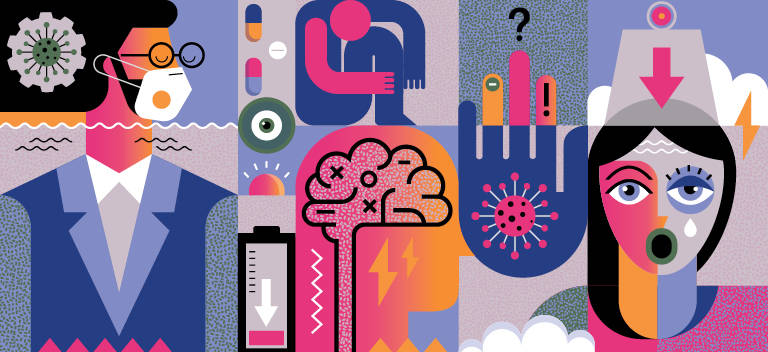This is top of mind for Sabiha Raoof, MD, FACR, chief medical officer and chair of radiology for Jamaica and Flushing Hospitals and chief medical officer for Medisys Health Network in New York. Serving a diverse urban population, her hospitals have been the epicenter of the pandemic in New York City, and her staff have witnessed intense suffering. At the height of the crisis, her hospital had 550 COVID-positive patients, 150 of whom were on ventilators. This is four times the normal inpatient volume. They increased capacity by 50% by the middle of March; a week later, they doubled capacity again. The pediatric, OB/GYN, and psychiatric wards all became COVID-19 units.
Meanwhile, non-COVID-19 patients stayed away. “We usually have 2–3 appendectomies a week. We’ve had none since the pandemic,” says Raoof. “People are so afraid that they have delayed calling the ambulance until too late.” Her ambulance crews were pronouncing 20, even 40 deaths a day at people’s homes, a rare occurrence before the pandemic.
To deal with the onslaught of COVID-19 inpatients, the hospital closed all ambulatory sites and called all outpatient staff to work on inpatient units. Staff who usually spent their days in the radiology department performing routine X-rays found themselves suddenly on the frontlines of COVID-19 wards, providing portable X-rays for desperately ill patients. The RTs saw much more suffering and death than they were used to, says Raoof. Seeing patients dying alone without family is difficult for anyone, but RTs may be even less prepared for the sight than healthcare workers in other parts of the hospital.
In the first intense days of the pandemic, with recommendations for PPE constantly changing and so many unknowns regarding presentation of this illness, Raoof’s staff dealt with an avalanche of patients. According to Raoof, many staff got sick themselves — including radiology staff, especially US and X-ray technologists. “The staff have been patients themselves,” she says. “They know how their patients felt when they could hardly breathe.”
Raoof also points out pre-existing mental health needs that have gone unmet and have also increased because of the trauma of the pandemic, both in the community and among her staff. Many staff have experienced trauma at work and at home, caring for patients, getting sick themselves, and losing their own friends and family members to the disease. The hospital has opened up a wellness line for employees to seek support and is setting up in-person sessions. Staff are also reaching out to family members of patients who have died to extend their sympathy and help connect them to counseling or other resources.
Even without high rates of illness among staff, radiologists and staff members at University of Washington (UW) School of Medicine are concerned about returning to “normal,” says Mahmud Mossa-Basha, MD, vice chair of clinical operations for the university’s department of radiology. Administrative staff and RTs have been furloughed or moved to different facilities, which has been disruptive and stressful for many. The hospital had already established a peer-to-peer support program before COVID, and it has seen an increase in use lately, he says. Staff can access the program to talk to a coworker who has been trained to provide informal counseling. If the person appears to need additional support, the coworker can bring in a professional counselor.
“Communication is key,” Mossa-Basha says. “The more communication and transparency, the better.” Increasing communication had been a focus at UW before the pandemic, he says, and they are seeing the benefits of that now. Weekly faculty meetings have become virtual town halls, offering an opportunity to ask questions and understand not only what changes are being made — but why. Twice-weekly faculty and leadership huddles by section also help.
David S. Kirsch, MD, FACR, an IR with Southern Radiology Consultants in Louisiana, agrees that consulting with staff and listening to their concerns helps address the stress of practicing during a pandemic. Initially, he and his staff were nervous about continuing to see cancer patients and others whose care couldn’t wait during the early days of the pandemic. However, everyone worked together to ramp up their protocols, increase use of PPE, and adjust procedures to provide a safe environment for patients and staff.
The pandemic has also accelerated the move to telemedicine and teleradiology, Kirsch points out, which has enabled his practice to expand hours and increase access to care while also avoiding or exacerbating burnout among radiologists. Reading from the comfort of their own homes reduces worry about infection control and enables radiologists to work for an hour or two without adding a commute.
Even as Kirsch feels his practice and staff have taken adequate steps to prepare, he worries about the lingering effects of the pandemic on his community. “COVID-19 has affected everyone in every phase of life,” he says. “Nobody’s been hidden from it. A second outbreak or shutdown would be pretty devastating to everyone, including most of the healthcare system. We have to continue social distancing and other practices to mitigate that.”

